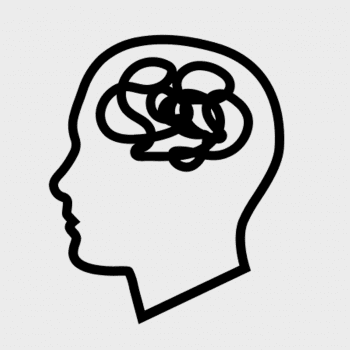Throughout the gospels, Christ touches the sick as he heals them. From men with leprosy to Peter’s mother in law, a 12-year-old girl in Capernaum to the blind men of Jericho, Christ chooses to lay his hands on the suffering. What do these moments tell us about Christ as a healer? And what do these narratives of touch reveal about human nature?
Interpretations of Christ’s healing touch
First, we’re going to identify two false or inadequate interpretations of these moments.
One common explanation is that Jesus was a magician. In antiquity, laying on of hands was used as a method of healing. Often, this was understood to transfer an independent magical energy from the healer to the sick person.
Under this explanation, Christ chooses to touch the sick in order to activate his magical abilities. Furthermore, his power to heal would be fundamentally impersonal, rooted in something other than His person. But as biblical scholar John Meier writes, any resemblance of Christ to a magician can be explained by appeal to Matthew’s literary style. Christ’s power to heal is not magic; it flows from His Oneness with God the Father who creates and sustains all things in being.
Another common explanation is that of psychosomatic healing. In the psychological literature, psychosomatic illnesses are not fully physical diseases, but rather caused or perpetuated by mental factors. This does not mean the illnesses are “faked” or “not real,” but rather that they may have top-down origin from the individual’s brain activity. Psychosomatic illnesses are often made worse by stress an anxiety, and therapies to relieve these psychological factors often alleviate physical symptoms as well.
Under this explanation, Christ’s touch would alleviate psychosomatic physical ailments alone. It would do so by altering brain activity related to anxiety and to perception, thereby reliving the individual of her disease. It is unlikely that all the sick brought to Christ suffered from psychosomatic illnesses. But even if this were the mechanism of a particular healing, it’s not enough; there’s a truth to these miracles not dissolved by a mechanistic explanation.
Namely, that we are embodied and need the touch of others.
The neuroscience of interpersonal touch
From the standpoint of neuroscience, we are clearly in need of touch.
Touch stimulates sensory receptors on the skin surface. These communicate with the brain through specific “C afferent” nerves. This pathway ultimately leads to the release of hormones that promote group bonding, such as oxytocin. For this reason, it’s unsurprising that touch plays a part in maintaining and strengthening relationships.
Furthermore, interpersonal touch alters brain activity in emotion-related centers of the brain. In this way, it communicates emotion and fosters positive feelings, including empathy and security. Interestingly, lack of touch has been linked to alcohol abuse and depression.
Of course, there are some for whom touch evokes memories of trauma and abuse. In these cases, recovery with medical and therapeutic help is necessary to resolve the trauma before these individuals can welcome touch. But such cases do not deny its essential role in wellbeing, but reinforce it, for they show that distorted and disordered touch causes unparalleled harm.

The importance of touch is most apparent in infants. “Kangaroo care” is when a parent holds his or her baby skin-to-skin on the chest. It fosters emotional bonding, regulates baby’s heart rate, breathing, and sleep, and reduces baby’s distress. More broadly, holding babies promotes their healthy brain development, especially in the case of premature infants. Finally, “infant massage,” or light touch at a velocity of 3 cm per second, dramatically reduces a baby’s pain processing. Strikingly, this is the rate at which parents intuitively stroke their infants. Without the caring touch of a caregiver, children fail to develop cognitive, social, and intellectual abilities. We are evolutionarily wired for human touch.
Our need for touch
So what does this tell us about ourselves? Our need to receive touch is part of our nature. When we seek healing from the Lord, therefore – for our failings, our disorders, our inadequacies – we must not neglect our embodiment. We cannot merely pray and strive for an intellectualized healing. We must place our whole selves at His feet and ask for His healing touch. This may take place through the embrace of loved ones, the care of medical professionals, or physical habits of health and self-care.

And what does it tell us about Christ? For Christ, too, became a human being. In these Scripture stories of healing, Christ’s encounter with the sick does not abstract from the physical reality of their suffering. Rather, He meets and heals them in that very embodiment. It’s a striking revelation of God as one who does not denigrate or avoid the messiness of our embodiment, but welcomes it as the place of encounter with Himself.
It’s important to note that Christ’s choice to touch the sick often violated Rabbinic legislation about purity. In this way, Christ establishing a new order of purity, one grounded in holiness and wholeness of heart. Let’s not neglect the body in our pursuit of that purity.
Further reading recommendations
For a thought-provoking read on embodiment and worship, check out Colleen Griffith’s “Spirituality and the Body” – chapter 4 of this work.
















